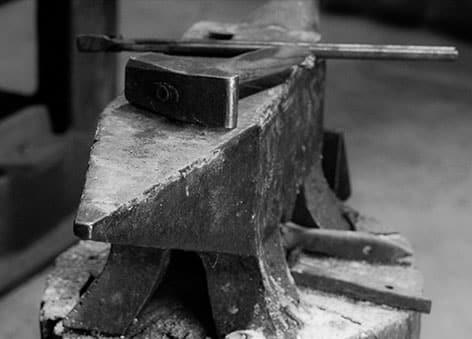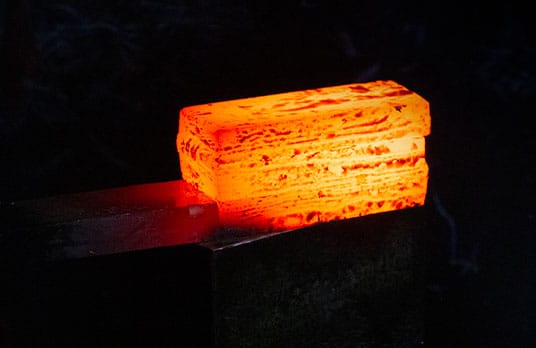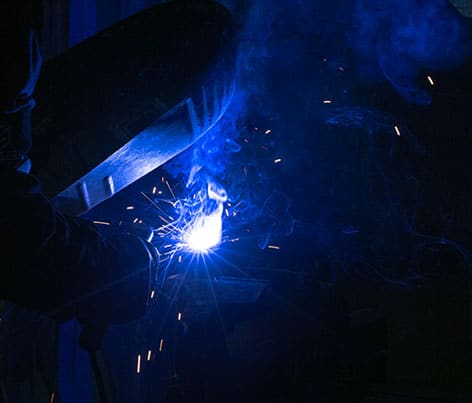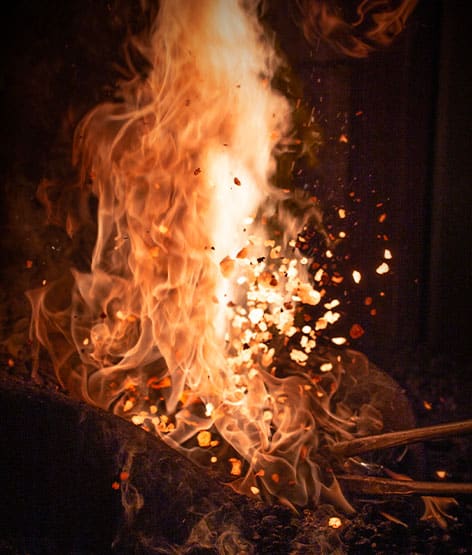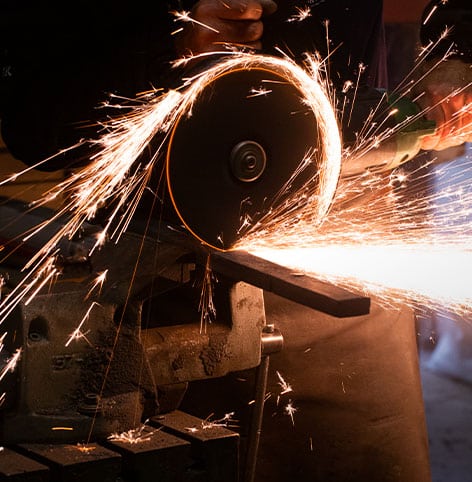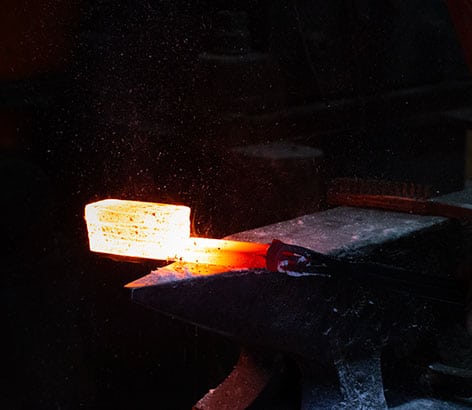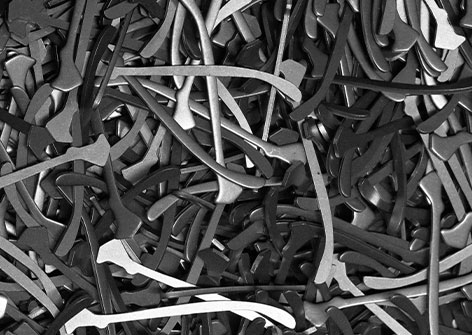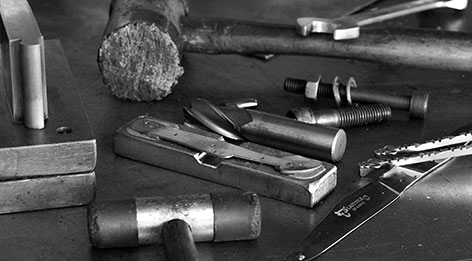
The power of our forge
Metalwork and steel craft
Laguiole en Aubrac is first and foremost committed to quality through local craftsmanship. The creation of the forge in the village of Montézic is one of the key stages in the development of our cutlery to build a strong identity and gain international recognition.
A FORGE TO EMBRACE LOCAL PRODUCTION AGAIN
The revival of the Laguiole knife craft manufacturing in its historic area began in the 1980s. By the 1920s, this artisanal activity had declined in the face of the industrialisation of cutlery in the Thiers basin.
At that time, with a dedication to upholding local artisanal traditions, Laguiole en Aubrac decided to create a forge in the small village of Montézic, located a stone’s throw from Laguiole. Three other artisan knife makers joined us in the early stages of this initiative. The Montézic forge and the craftshop in Espalion
set Laguiole en Aubrac apart from industrial productions and counterfeits. The cutlery possesses all the necessary workshops for artisanal manufacturing in the original area of the Laguiole knife.
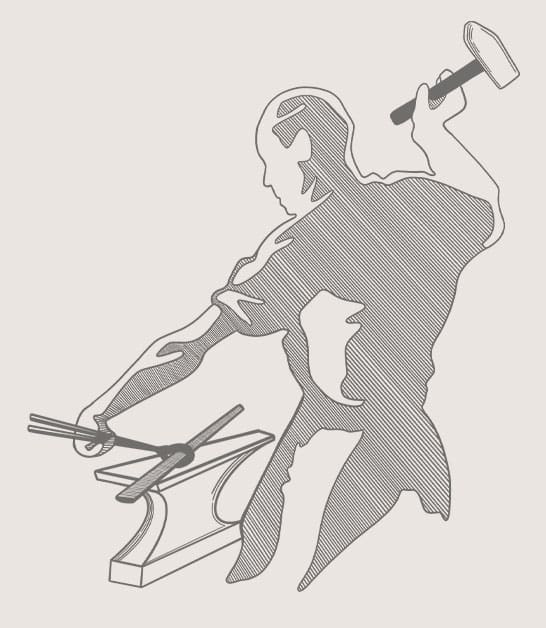
METALWORK AND STEEL CRAFT
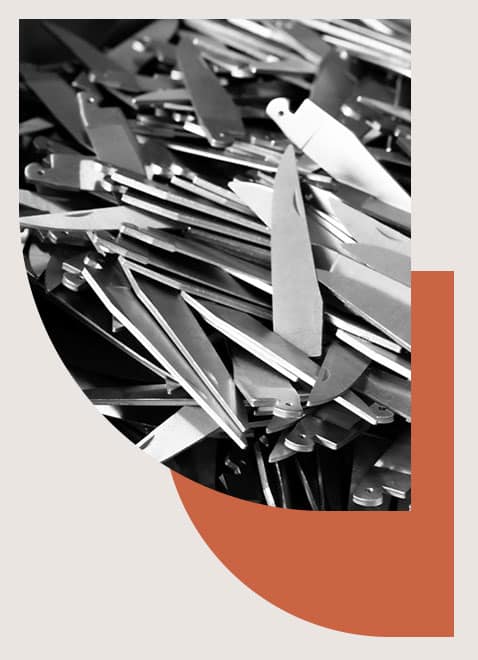
The work carried out at the Laguiole en Aubrac forge gives rise to the metal components that make up the knife before reaching the hands of the cutlers, who will proceed with their polishing and various finishing touches, such as engraving on the blades and springs.
Stainless steel and brass are shaped in their raw state into plates and solid bolsters. First of all, each knife is made up of a pair of plates. These are thin strips of metal alloy cut to the shape of the handle. They ensure that all the other components fit together properly. In other words, the plates are the knife’s backbone.
Second, the bolsters are the upper and lower ends of the handle, welded directly to the plates. They provide protection against everyday knocks and bumps. The knife made without bolsters is called full-handle knife.
The blade is considered as the knife’s key component and can be made from various steels. Historically and according to tradition, the carbon steel was used for the blades of Laguiole knives. This alloy of iron and carbon has a very good cutting edge and is easy to sharpen. However, the blade wears out quickly and requires regular maintenance to prevent oxidation. Today, we mainly use ‘stainless’ steels: 12C27M and 14C28N, which are more versatile. With suitable equipment, sharpening is easily achieved and these steels provide good corrosion resistance, ensuring the sharpness of the blade lasts over time.
Laguiole en Aubrac also works with blades selected for their particular aesthetic qualities.
The ‘brut de forge’ finish is ancestral ! Its distinctive feature is the wide strip of dark steel running along the back of the blade. Meticulous manual hammering is carried out on both sides to achieve this raw appearance. The ‘brut de forge’ blade is an authentic testament to the craftsmanship of our blacksmiths.
Damascus blades stand out for their beauty ! They are true works of art. Each one is unique and reveals a multitude of naturally embedded patterns. Laguiole en Aubrac offers a range of six different Damascus blades. The Japanese Damas and the Balbach Damas are crafted in our workshops. The blades are cut into the desired shape, thinned through grinding,
then hallmark, stamped and revealed. The other Damascus blades : Foliated, Explosion, Mahomet and Twisted are entirely made by our blacksmiths.
The blade is the knife’s key
component and can be made from various steels
THE ARTISANAL MANUFACTURE OF DAMASCUS STEEL
Damascus steel is an exceptional material crafted through a forging technique dating back several thousand years. A Damascus blade is obtained by the combination and layering of several steels, providing both great strength and a fascinating aesthetic.
In our forge, we manufacture our own Damascus steel with a variation of four specific designs. The first step involves gathering multiple steel plates to form a single block called a ‘kit.’ The steels are heated in the forge’s hearth and then hammered to homogenize the welding between the layers.
Shaping Damascus steel involves several successive stages. First of all, the ‘kit’ is heated in order to work and shape the steel. The blacksmith then uses an anvil to stretch and flatten the block. This results in steel bar of steel which is then cut and folded onto itself to forge a new kit. This pattern is repeated as many times as necessary to shape a Damascus steel made up of hundreds of layers.
The characteristic Damascus designs and patterns are created by the blacksmith as he cuts and bends the steel bar. Several different techniques are used to obtain the desired aesthetic. Laguiole en Aubrac forges four different Damascus steels: Foliated, Explosion, Mahomet and Twisted.

In our forge, we manufacture our own Damascus steel with a variation of four specific designs.
In our forge,
we manufacture our own Damascus steel with a variation of four specific designs
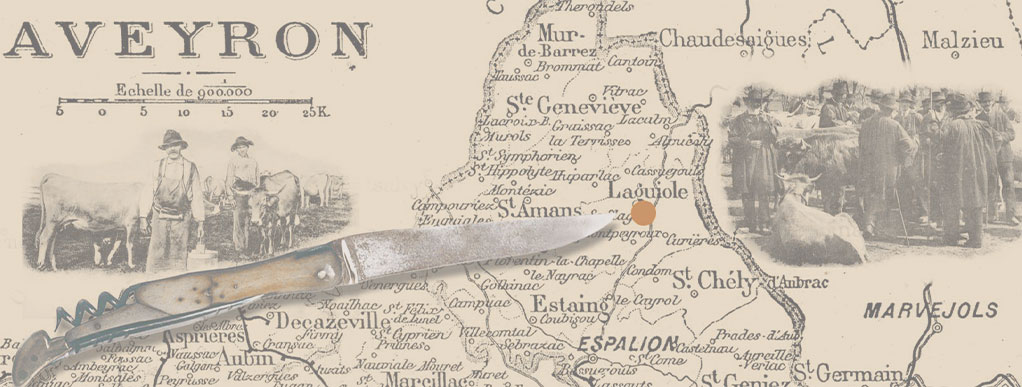
ONCE UPON A TIME THE LAGUIOLE
In the early 1800s, a humble peasant knife was born in Laguiole, a small mountain village in North Aveyron. Its famous bee, a symbol of prestige and quality adorning its spring, would make it the most famous knife in France.

